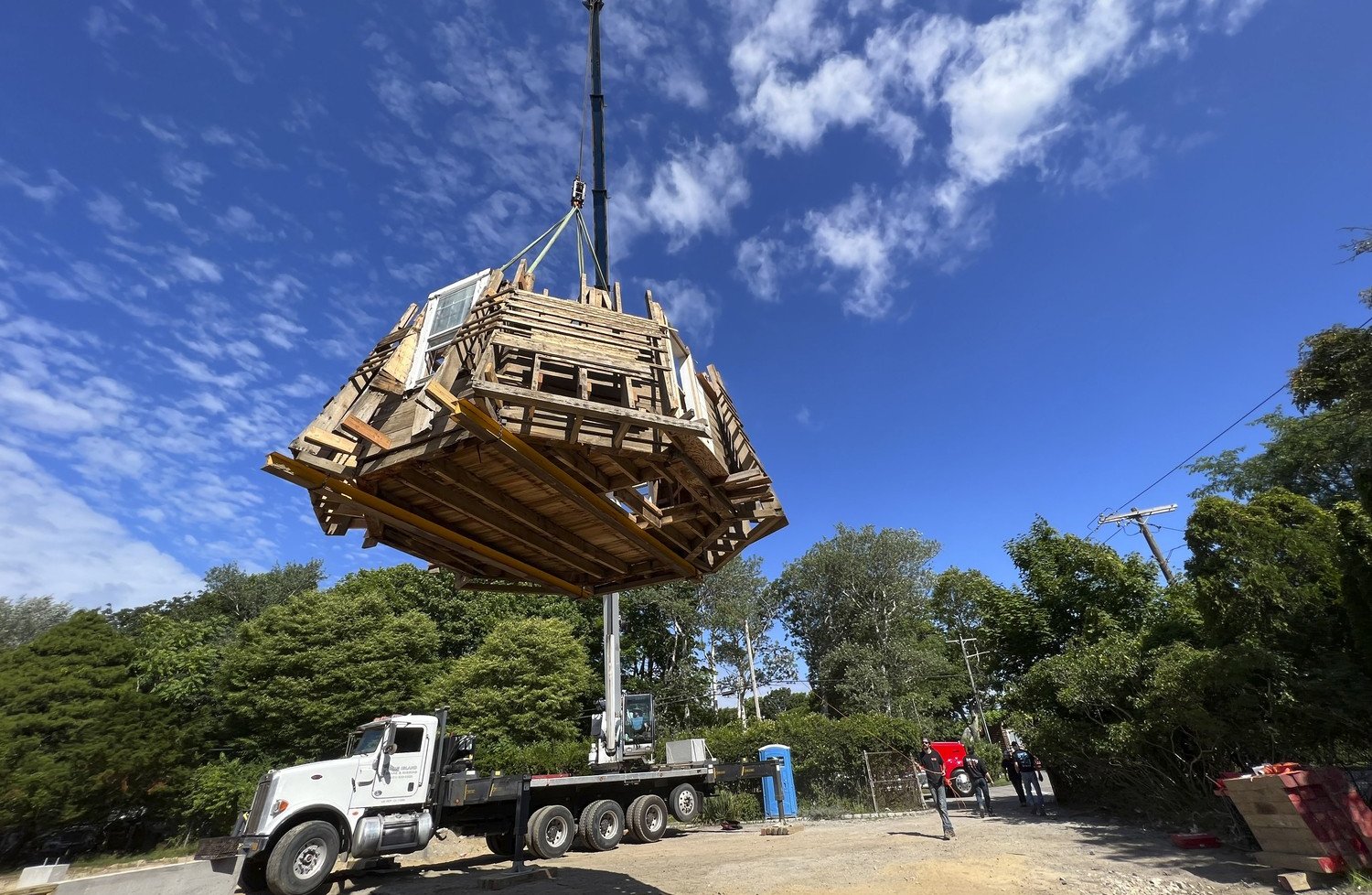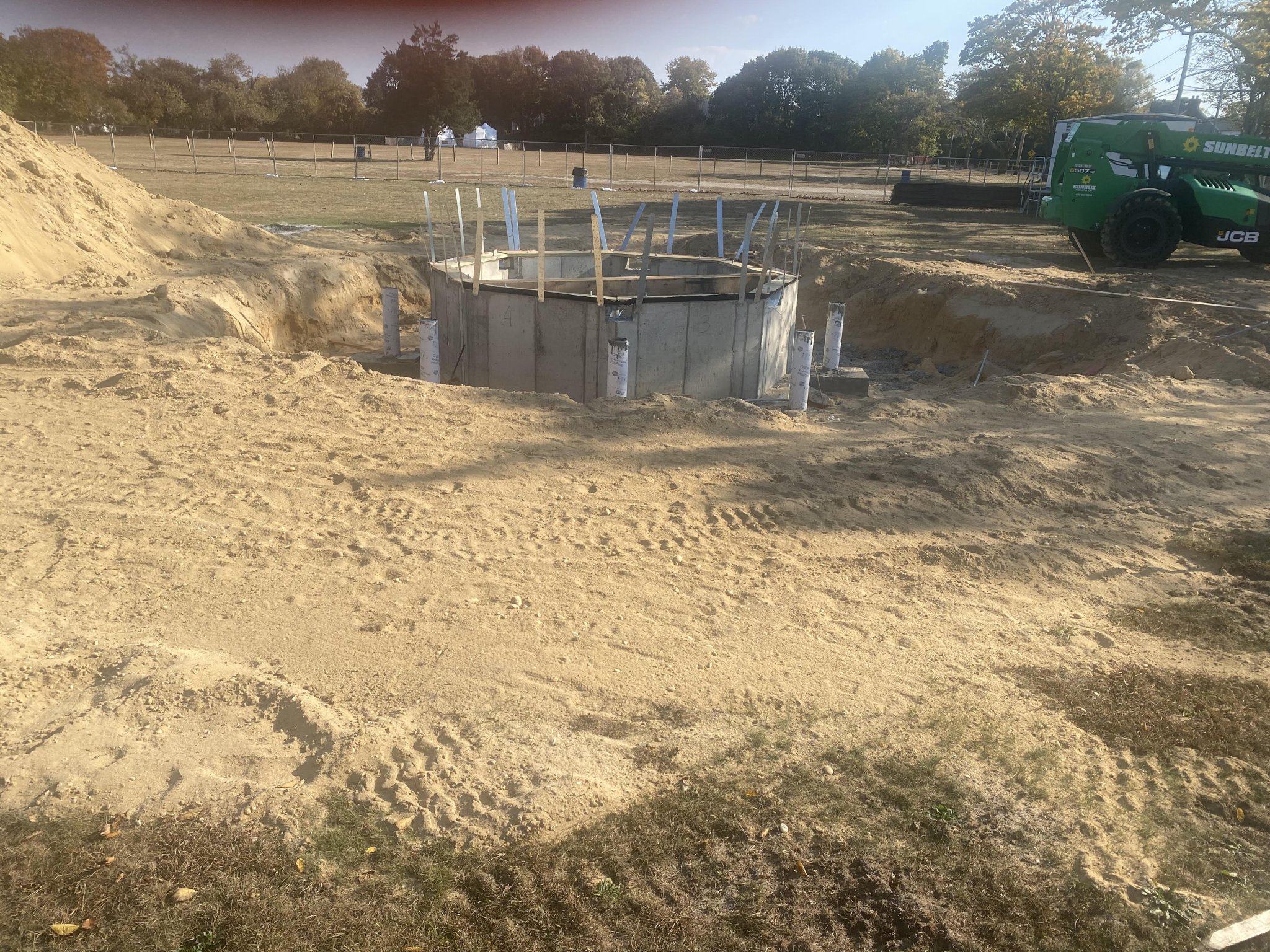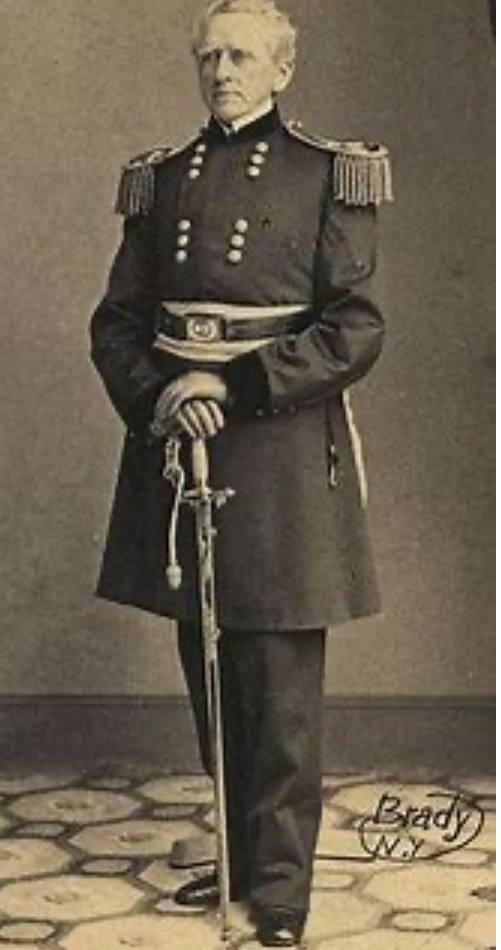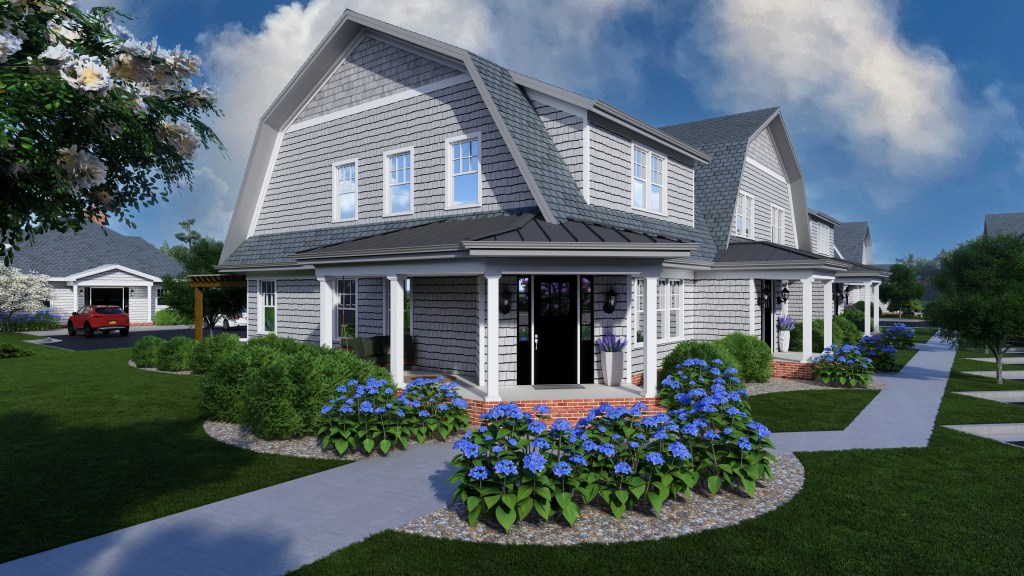Gov. John Adams Dix Windmill Is Historic Preservation Success in Westhampton Beach

The Village of Westhampton Beach is presently reconstructing an historic windmill originally built for New York State Gov. John Adams Dix in about 1870 as part of the first summer estate in the village. The Greater Westhampton Historical Museum is proud to have played a part in this preservation process.
John Adams Dix (1798-1879) had a long illustrious military and political career that included serving in the War of 1812 and Civil War, U.S. senator (1845-1849), president of the Mississippi and Missouri Railroad (1853) and Union Pacific Railroad (1863-1868), Postmaster of New York City (1860-1861), Secretary of the Treasury (1861), US Minister to France (1866-1869), and 24th governor of New York State (1873-1874). He moved to New York City in 1849 and established a summer residence in Westhampton Beach shortly after the 1869 extension of the LIRR made the East End more accessible. He would have been in his early 70s when the windmill was built.

Following his death in New York City in 1879, his son, the Rev. Dr. Morgan Dix inherited the property. Reverend Dix sold the property to Desmond Dunne, a Brooklyn Commissioner of Public Works, in early 1902. A 1915 photograph of the Dunne estate (courtesy of the Digital Archives of the Queens Library) provides the earliest picture of the windmill. More recent photos and a postcard show the windmill in great detail, both as a working structure and when converted to living space in later years.
Westhampton Beach was previously referred to as “Windmill Town” (Historical Sketch of the Incorporated Village of Westhampton Beach, N.Y. by Beatrice Rogers) due to the number of the windmills in the Village. The Dix windmill is a “smock style” windmill, referring to the roof that resembles smocks traditionally worn by farmers and millers, and was designed to pump water for agricultural and household purposes, rather than for milling grain or sawing timber. Water windmills could be more slender than grist or saw mills since they contained considerably less mechanical equipment.
The structural framing is heavy duty, visually impressive, and in very good condition. The windmill had four wooden blades attached to shafts connected to an exposed windshaft. The windmill blades and windshaft were previously removed, although original wrought iron straps and long bolts used to prevent splitting of the windshaft were found on its former site. Typically windmills of this type had rotating roof structures, windshafts, and blades that allowed the blades to be turned into the wind. However, windmills used for water pumping apparently did not require this feature and the roof of the Dix Windmill was fixed with the fan blades facing the prevailing winds (this windmill likely originally faced westerly). The blades could turn at a speed of upwards of 30 miles per hour and were slowed and stopped via a brake wheel on the windshaft.
The windmill was most recently part of a two-story home that was acquired in about 2021 by new owners who planned to redevelop the property. A few sharp-eyed folks discovered that the windmill was headed for a dumpster and made the village and museum aware of the potential loss of this iconic historic structure. Through the efforts of many concerned folks a plan was developed to save the windmill by moving it to a village location and landmarking it, which would facilitate obtaining Town of Southampton Community Preservation Fund (CPF) monies for restoration. The Greater Westhampton Historical Museum played a key role by setting up and publicizing a Go-Fund-Me account to raise the capital necessary to remove the windmill from its former location and transport it to its new home, the Village’s Great Lawn. This effort was successful and enabled the windmill to be moved in three sections and properly stored pending restoration.

The moved structure was designated as an historic landmark by the Town of Southampton (pending restoration) and an intermunicipal agreement was executed between the Town and Village, enabling CPF historic preservation funds to be utilized for restoration. A group of volunteers subsequently prepared plans and specifications for restoration and the Village solicited bids in 2023. Restoration is now underway. The water well that will be connected to the mill has been drilled and the mill foundation was poured in mid-October. As of this writing two sections of the windmill structure have been placed on the foundation and work is underway to connect them and prepare for the remaining two sections to be hoisted into place.
We all look forward to seeing the fully restored windmill operating in 2025, when it will serve as a working reminder of Westhampton Beach’s history!
The Greater Westhampton Historical Museum is a 501(c)(3) nonprofit organization that preserves and promotes the history of the communities it serves, including Westhampton, Westhampton Beach, Westhampton Dunes, Quiogue, Remsenburg, Speonk, and Eastport. The Museum campus at 101 Mill Road in Westhampton Beach features four restored historic buildings and an archive that is a community resource for historic preservation. Anyone interested in the history of the greater Westhampton area is encouraged to become a Museum member. For more information visit whbhistorical.org, 631-288-1139 or email contact@whbhistorical.org



